I’m starting this by righting a wrong. Someone pointed out last week that Robert Donat was born in Withington. I had long intended to look at his birthplace, I am a big fan, TPTV is hard wired on my telly and through those wonderful people I have had chance to catch more of his films than the two I did know, The 39 Steps and Goodbye Mr Chips.
I therefore made sure this time and started chez Donat of yore. He was the fourth British actor to win an Oscar, and certainly the first Mancunian to be so honoured. Looking at the 1911 census, he was known to his family as Fritz.
Starting here also gave me the opportunity to revisit a couple of other childhood memories, Withington Baths, we met its architect, John Henry Price last time. The facility is now run by a charitable trust, as it was scheduled for closure when Manchester Council built a new complex at Hough End (along with Withington Tram stop, it ain’t in Withington). My dad used to take me swimming there every Sunday morning. It was a source of scandal at the time of its opening, as it was the first public pool in Manchester to permit mixed bathing.
A little bit further along, the erstwhile Methodist Chapel was where in the early 1970s my mum grabbed the bargain of the century for me at a jumble sale, the first two Monkees Lps for 5p each. I still have those, and proudly walked around school with them when the other kids were into Led Zeppelin.
I don’t have any particular plan on these walks, just follow my nose, and a road called Old Moat Lane did catch my eye. It was named not for the ancient Manor House of Withington, but for the moated farm which replaced it. This rewarded me with the sight of a drinking trough, now lovingly converted to flower bed, the trough was fed by clean water, it then was given by the caring council to a farmer in Heald Green, who used it properly for its intended purpose, but had only requested a tin bath. Fortunately it was recovered in 1985 and restored to its rightful place by the Withington Civic Society.
At Old Moat Park I spotted an apple tree which although it had relinquished its leaves, seemed reluctant to part with its fruit.
Returning to Wilmslow Road, Rutherford Lodge is named for Ernest, the most famous resident, and father of nuclear physics. Dunwood House a few doors down, appears to have housed quite a few teachers and University Lecturers, along with Charles Fay, who specialised in designing braking systems for passenger trains.
McDonalds I would not normally include, but the Fallowfield McDonald’s was their first UK drive through in 1986. Like many puzzled Mancunians I did wonder whether we needed one, but they are so ubiquitous these days so we must. Incidentally, the now vanished McDonald restaurant on Market Street was the 100th in the UK. Manchester must mean something to them.

Sainsbury has occupied the old Fallowfield Station, which served commuters from 1891 to 1958. I think it’s quite a good reworking of the building, a bold modern style not detrimental to the original building, almost resembling a modern railway terminus, and most importantly keeping it in use. The old Levenshulme South Station is also being refashioned into a cycle cafe and they are doing good work to bring that building back to life.

The old USDAW offices at Oakley was once the residence of Robert Barnes (1800-1871), of Barnes House in Heaton Mersey and Barnes Hospital in Cheadle. He died there on Christmas Day 1871. Originally intended for the Church, he became instead a cotton spinner, serving as Mayor between 1851 and 1853 during which time Manchester became a city. The property is now being refashioned for student accommodation.

The Toast Rack seems sad and folorn these days. Pevsner loved it, calling it perfect pop architecture, and it is a product of the 1960s. It is perhaps one of the few pieces of modern architecture held in high regard amongst the cognoscenti and the public. It was one of the last designs by Leonard Cecil Howard, City Architect. Howard also worked on the Mersey Tunnel, the reconstruction of the Free Trade Hall after the Blitz and Manchester Airport Terminal Building. I think that is a legacy of which he can be proud.
Manchester Metropolitan University sold it in 2014. There are plans to redevelop it, but little evidence of that, and it is in need of some TLC.
Manchester does not seem to do green space. The parks in the centre are really a disgrace when you compare them to Liverpool or Leeds. Platt Fields, the site of Platt Hall, and the park secured for the town by John Harrop is not well kept, the hidden gem of the Shakespearean Sunken Garden is best left hidden in its current state, it’s overgrown and left to decay. They really could do better.
There aren’t even any rowing boats for hire any more, I spent many a happy Sunday afternoon at the Park. Still Platt Hall is still standing, tucked away in the corner, thankfully saved from the wrecking ball.
There is a lovely thread on Facebook, where Robin Wright is tracing the Gore Brook from its source to the Mersey, at once totally pointless yet engaging. As you may guess, I love it, so thought I would catch a snap of the Brook as it traversed Platt Fields.

The city centre was now creeping up on me and Manchattan peeped out from behind some houses. I am one who loves the towers appearing around the outskirts of town. Manchester never grew by standing still. The new can live with the old.
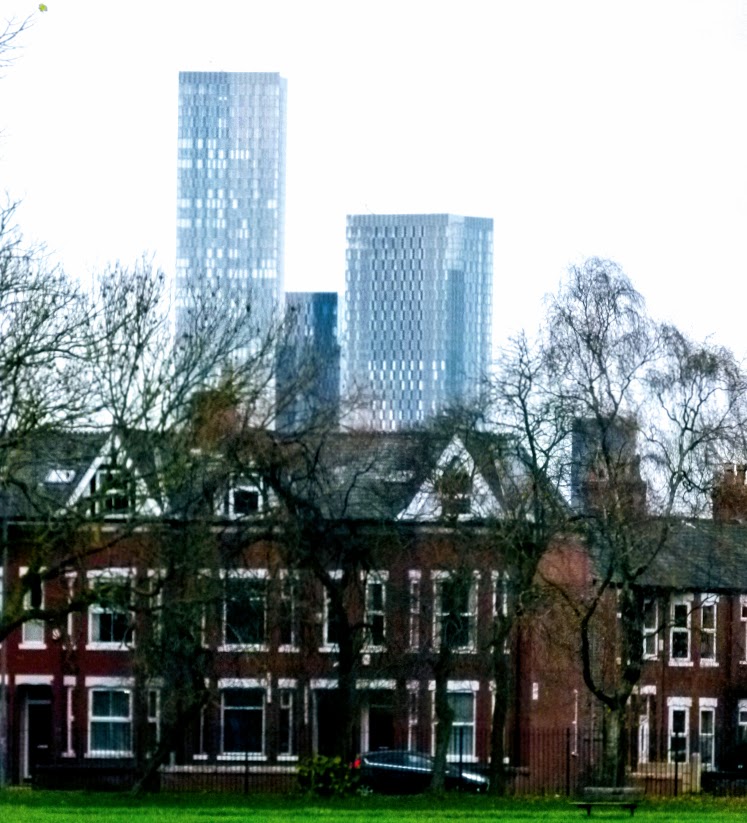
Brighton House is one of the few houses that got built of an ambitious estate for the wealthty merchants of Manchester planned in 1836. Gore Brook was to be dammed creating a water feature giving an air of country, yet near town. I am not sure whether the feature was ever built, but it is shown on the 1848 Ordnance Survey.

Artist Impression © Rusholme Archive 
Lancashire CXI, 1848 © Ordnance Survey

I was intending to take some pictures of the Curry Mile, but many restaurants have been converted to Shisha Bars, and then most of it was shut and replete with roadworks . I did however enjoy a Halloumi and Zaataar Pizza whilst passing through. The banner seems obsolete now, it’s far too difficult to park up there anyway. For my money the best Indians are in the centre these days, and those who want cheap and cheerful cannot go far wrong visiting Thomas Street.

Initially I thought my disappointment with Mancunian Parks was going to be changed with the autumn leaved carpet into Whitworth Park.
However, I can’t say that the Park itself was that well tended. They really could do better. The Whitworth Art Gallery (which I must admit I have not visited since it reopened, but that is more to do with the internal politics promulgated by my ex boss than a disinterest) also stands like Platt Hall hidden in the corner. Before this was rebuilt as an Art Gallery, it was Grove House, and one of many very fine houses which stood on the Oxford Street (as was) estate now largely replaced by University Buildings, however, the odd one does pop up and will be rich pickings for my future detailed explorations.

Lancashire CIV 1848 © Ordnance Survey 


I must admit for my liking of modern architecture, I am not all that sold on the Contact Theatre, it looks to me like an attempt to mirror Fort Ardwick. which itself was not a good idea. The theatre itself caters to students, which probably explains the 35 year gap since my last visit. It did used to specialise in Brecht, when Brecht was fashionable, and I studied German. They did however go through a phase of staging Raymond Briggs stories, I saw the Snowman (I think it was a world premier) and When The Wind Blows there, as well as Rik Mayall in a Brecht performance.
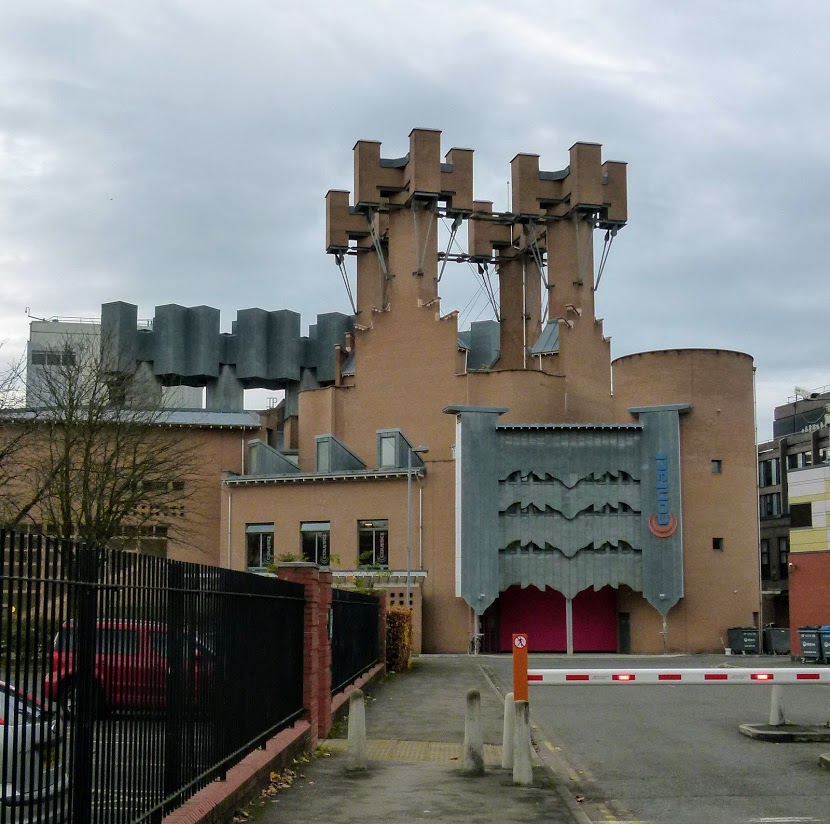
Along with as the Whitworth Art Gallery we have the ceremonial Whitworth Hall, built in commemoration of Sir Joseph Whitworth (1803-1887) at the turn of the 20th Century and designed by Alfred Waterhouse. Whitworth made his reputation designing precision measuring devices and the Whitworth Screw Thread. He made his fortune with his rifle, sold during the Crimean War. Joseph’s second wife was Mary Louisa Broadhurst (1828-1896), the widow of Alfred Orrell of Abney Hall.

Towards the RNCM I saw a large queue of students, although you can’t see it, it stretches around the block. What a shame there is no cheap, easy and quick way to fashion a sandwich at home.

At All Saints, the front of the old Chorlton Upon Medlock Town Hall stands next to the Art College where Pierre Adolphe Valette taught. The town hall only functioned as such from 1831 to 1838. It was designed by Richard Lane (1795-1880) who was also responsible for the Friends Meeting House in Manchester, The Old Manchester Infirmary in Piccadilly and most magnificently the Stockport Infirmary opposite Stockport Town Hall. He also designed many of the houses in Victoria Park.

The Johnny Roadhouse music shop is an iconic building for many of Manchester’s music community, Johnny (1921-2009) was self taught in the saxophone and was one of the founding members of the Northern Dance Orchestra (which for younger viewers was the Little Mix of its day). The NDO saw such luminaries as Syd Lawrence and Alyn Ainsworth in its ranks, and some of them can still be seen to this day, sitting in as the Pit Orchestra to Leonard Sachs mellifiously exuberant verbosity in repeats of The Good Old Days.
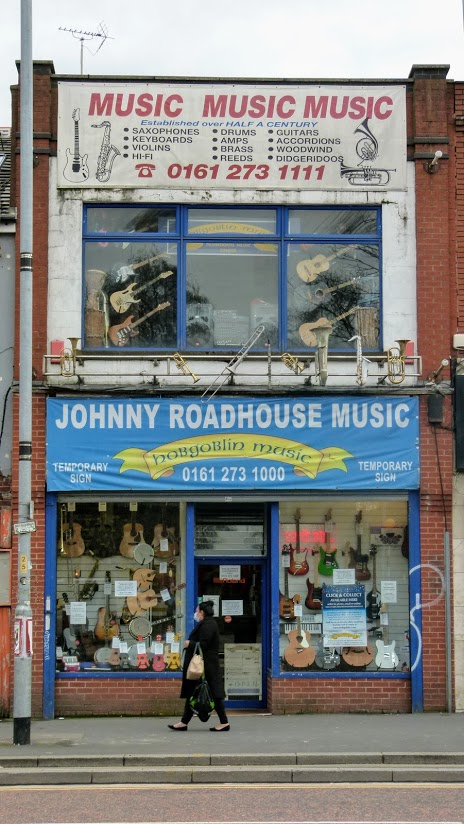
We are nearing the end of the journey now, the old BBC studios on Oxford Road have now totally disappeared and are replaced by a building I am not fond of as it obscures the Refuge Building, something that should have not been allowed to happen. A last glimpse of the Medlock with a bridge of sighs and I caught the bus back to my car.

Five miles today, quite a lot to see, sorry I rambled a bit, you should see what I left out. I have covered 1,314 miles to date. Map below, video here.

© Allan Russell 2020.






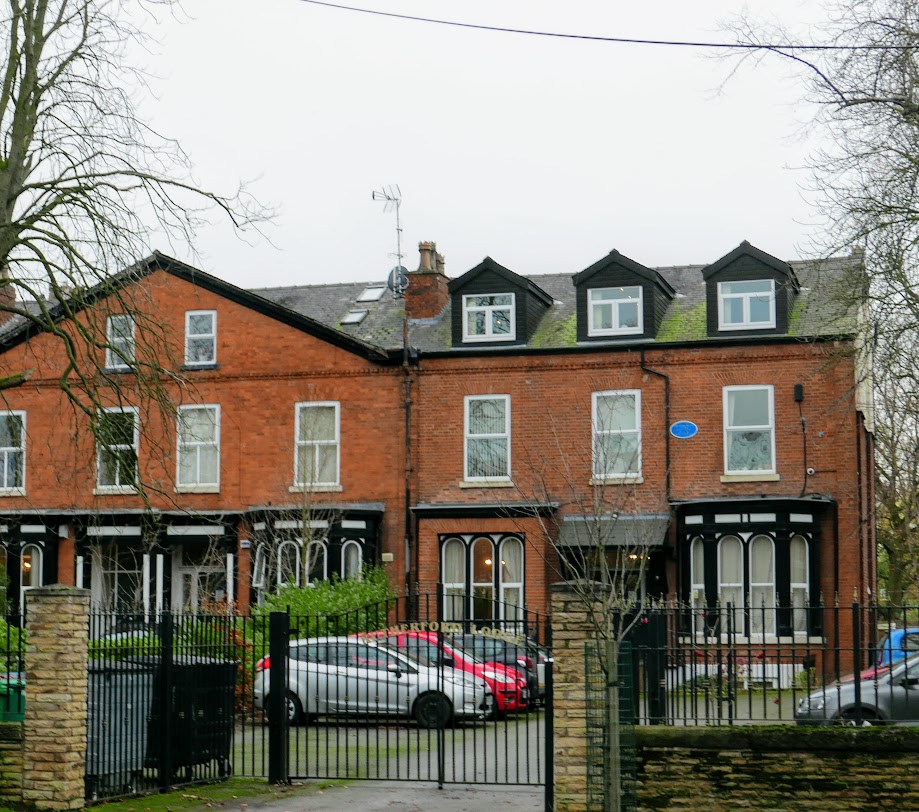

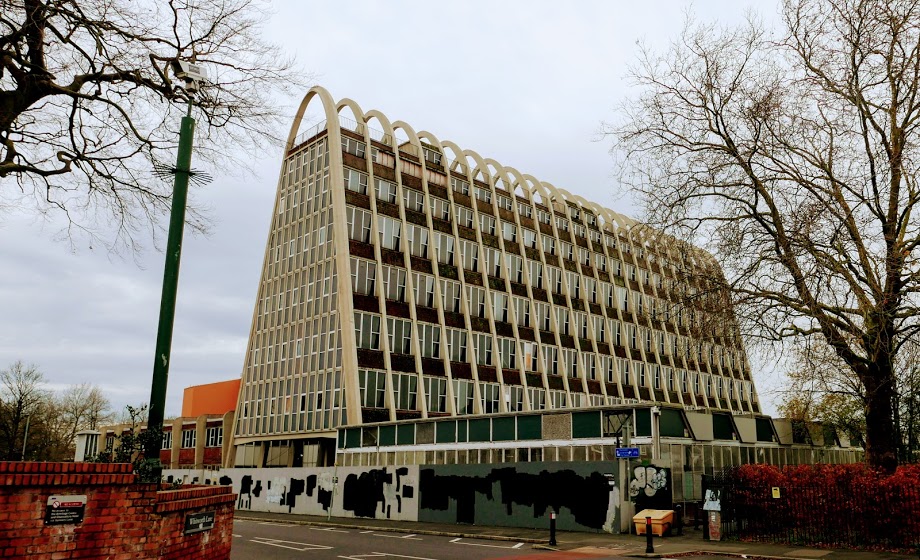

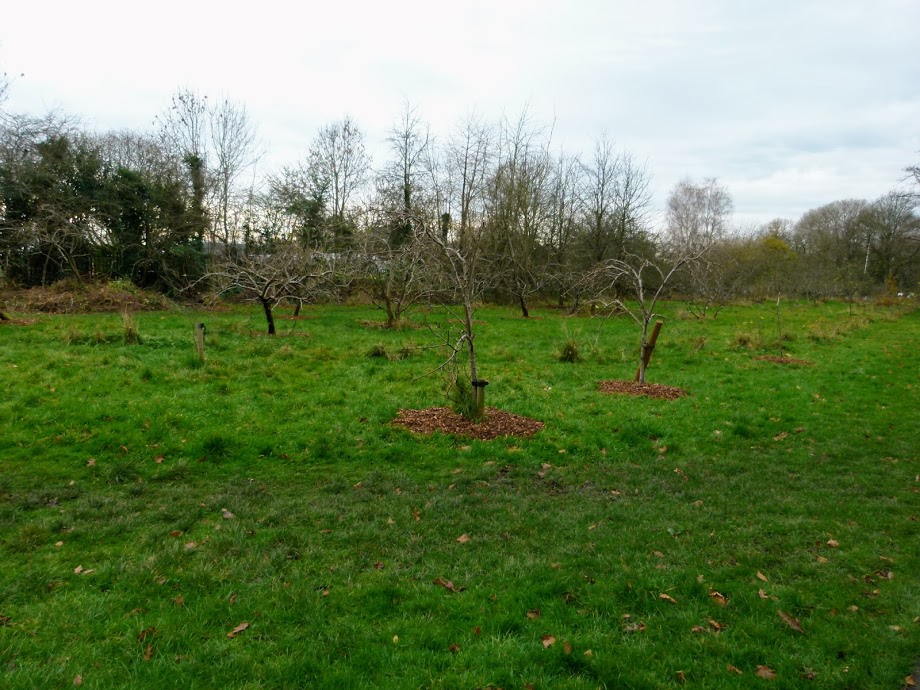

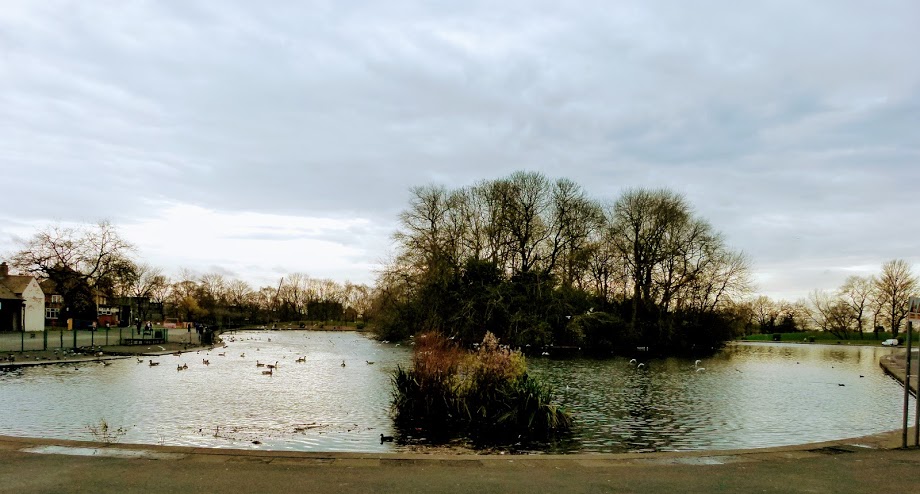

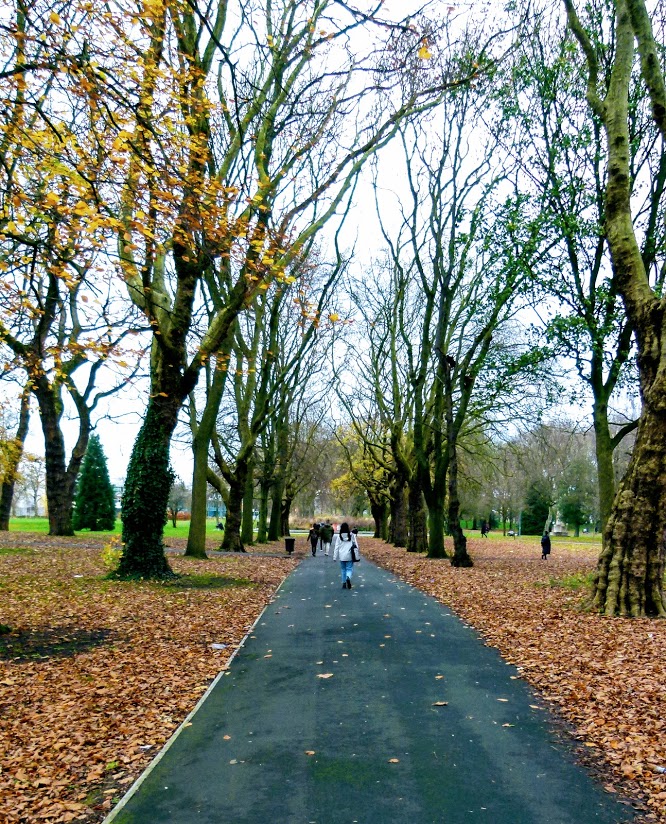

Hi Alan, thanks for another very interesting read. Can you confirm where Robert Donat was born?
LikeLike
It’s in Withington. I don’t want to say more as that’s not fair on the owners. That said it’s easy to Google
LikeLike
Robert Donat was an Old Boy of my childhood school, Manchester Central Grammar School for Boys.
The Literary Prize, awarded every year at our Speech Day held at the Free Trade Hall, was called the Robert Donat Prize for Literature.
I was a pupil 1959-1964, and it was said that he modelled himself, as Mr Chips, on one of his old teachers when he too was a pupil there.
LikeLike
Hi Allan,
found this blog looking for info on Brighton House. Great read, I have just moved in to Fallowfield and am enjoying learning the history. Do you have any more info on BH or tips on where I can look?
Many thanks,
Rado
LikeLike
I use British newspapers online which costs or the Guardian archives which are free if you have a library card
LikeLike